Mechanism of imidazolium ionic liquids toxicity in Saccharomyces cerevisiae and rational engineering of a tolerant, xylose-fermenting strain
- PMID: 26790958
- PMCID: PMC4721058
- DOI: 10.1186/s12934-016-0417-7
Mechanism of imidazolium ionic liquids toxicity in Saccharomyces cerevisiae and rational engineering of a tolerant, xylose-fermenting strain
Abstract
Background: Imidazolium ionic liquids (IILs) underpin promising technologies that generate fermentable sugars from lignocellulose for future biorefineries. However, residual IILs are toxic to fermentative microbes such as Saccharomyces cerevisiae, making IIL-tolerance a key property for strain engineering. To enable rational engineering, we used chemical genomic profiling to understand the effects of IILs on S. cerevisiae.
Results: We found that IILs likely target mitochondria as their chemical genomic profiles closely resembled that of the mitochondrial membrane disrupting agent valinomycin. Further, several deletions of genes encoding mitochondrial proteins exhibited increased sensitivity to IIL. High-throughput chemical proteomics confirmed effects of IILs on mitochondrial protein levels. IILs induced abnormal mitochondrial morphology, as well as altered polarization of mitochondrial membrane potential similar to valinomycin. Deletion of the putative serine/threonine kinase PTK2 thought to activate the plasma-membrane proton efflux pump Pma1p conferred a significant IIL-fitness advantage. Conversely, overexpression of PMA1 conferred sensitivity to IILs, suggesting that hydrogen ion efflux may be coupled to influx of the toxic imidazolium cation. PTK2 deletion conferred resistance to multiple IILs, including [EMIM]Cl, [BMIM]Cl, and [EMIM]Ac. An engineered, xylose-converting ptk2∆ S. cerevisiae (Y133-IIL) strain consumed glucose and xylose faster and produced more ethanol in the presence of 1 % [BMIM]Cl than the wild-type PTK2 strain. We propose a model of IIL toxicity and resistance.
Conclusions: This work demonstrates the utility of chemical genomics-guided biodesign for development of superior microbial biocatalysts for the ever-changing landscape of fermentation inhibitors.
Figures
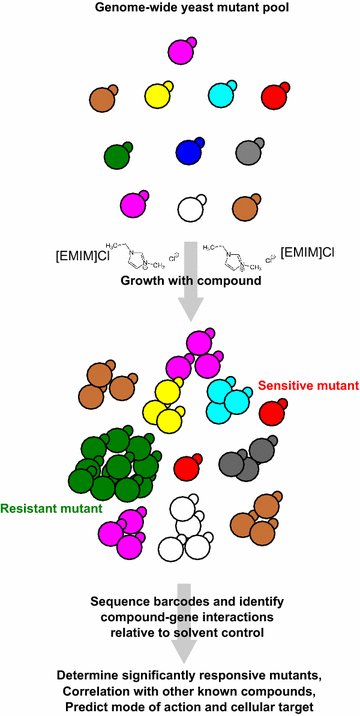
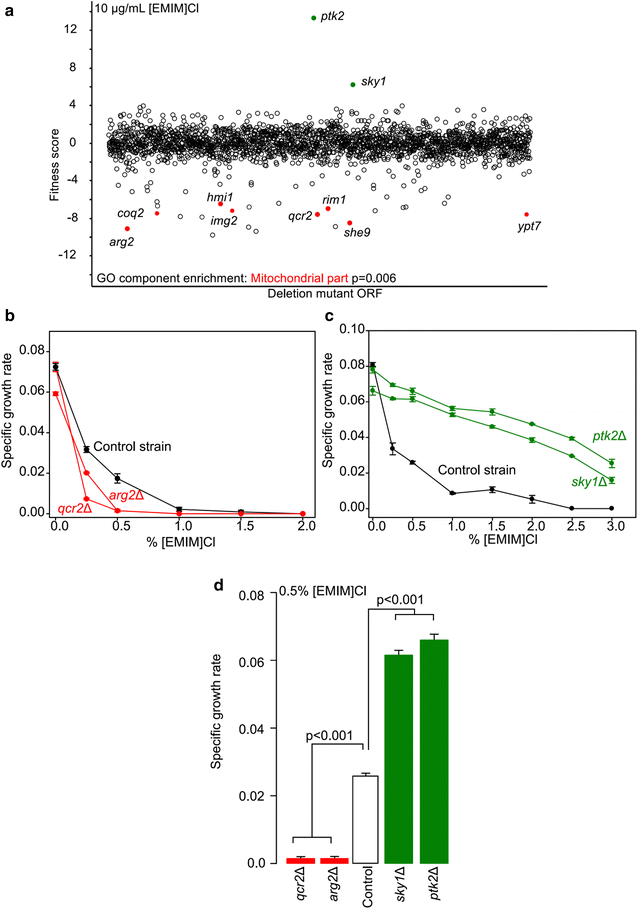
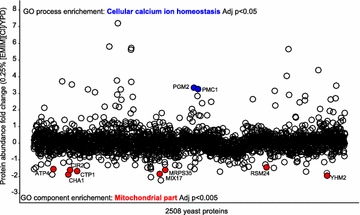
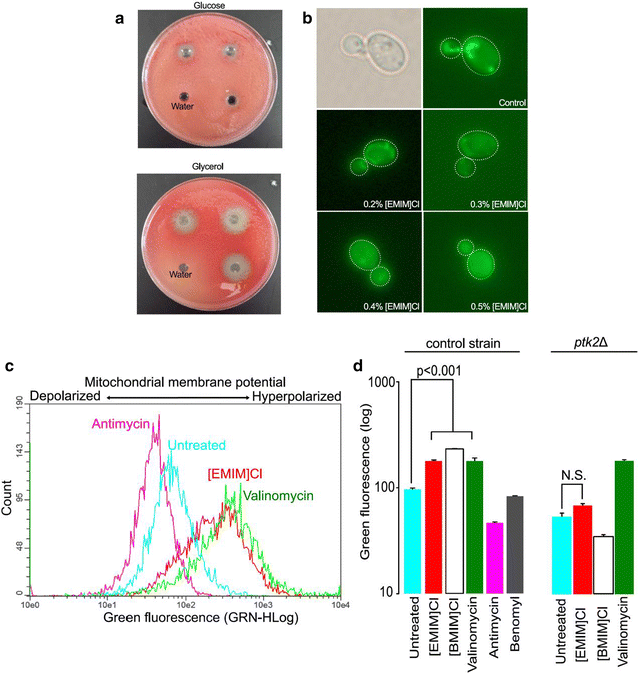

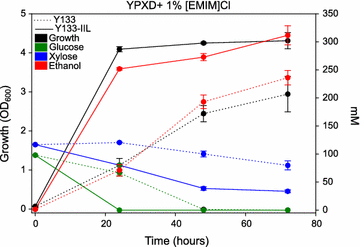
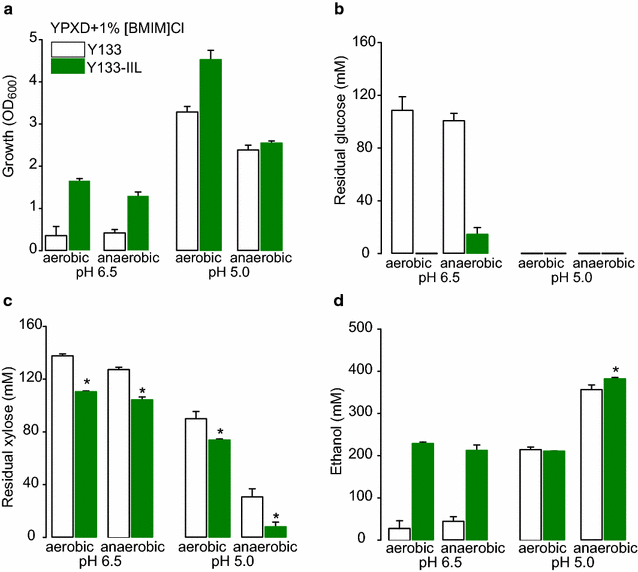
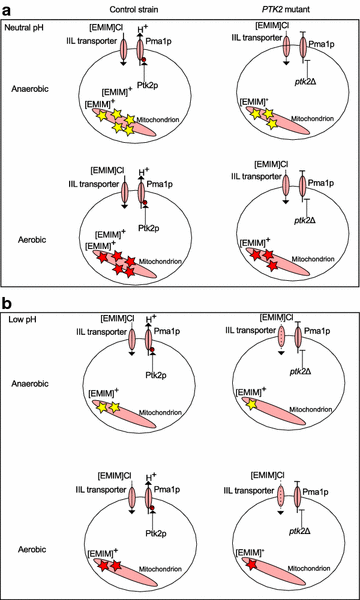
References
-
- Palmqvist E, Hahn-Hägerdal B. Fermentation of lignocellulosic hydrolysates. II: inhibitors and mechanisms of inhibition. Bioresour Technol. 2000;74:25–33. doi: 10.1016/S0960-8524(99)00161-3. - DOI
-
- Keating DH, Zhang Y, Ong IM, McIlwain S, Morales EH, Grass JA, Tremaine M, Bothfeld W, Higbee A, Ulbrich A, Balloon AJ, Westphall MS, Aldrich J, Lipton MS, Kim J, Moskvin OV, Bukhman YV, Coon JJ, Kiley PJ, Bates DM, Landick R. Aromatic inhibitors derived from ammonia-pretreated lignocellulose hinder bacterial ethanologenesis by activating regulatory circuits controlling inhibitor efflux and detoxification. Microb Physiol Metab. 2014;5:402. - PMC - PubMed
-
- Almeida JR, Modig T, Petersson A, Hähn-Hägerdal B, Lidén G, Gorwa-Grauslund MF. Increased tolerance and conversion of inhibitors in lignocellulosic hydrolysates by Saccharomyces cerevisiae. J Chem Technol Biotechnol. 2007;82:340–349. doi: 10.1002/jctb.1676. - DOI
Publication types
MeSH terms
Substances
Grants and funding
LinkOut - more resources
Full Text Sources
Other Literature Sources
Molecular Biology Databases
Miscellaneous

